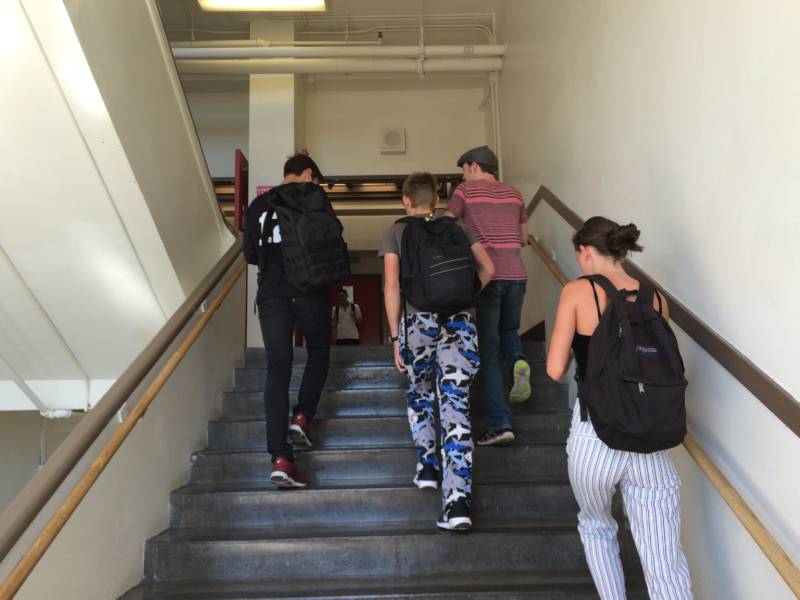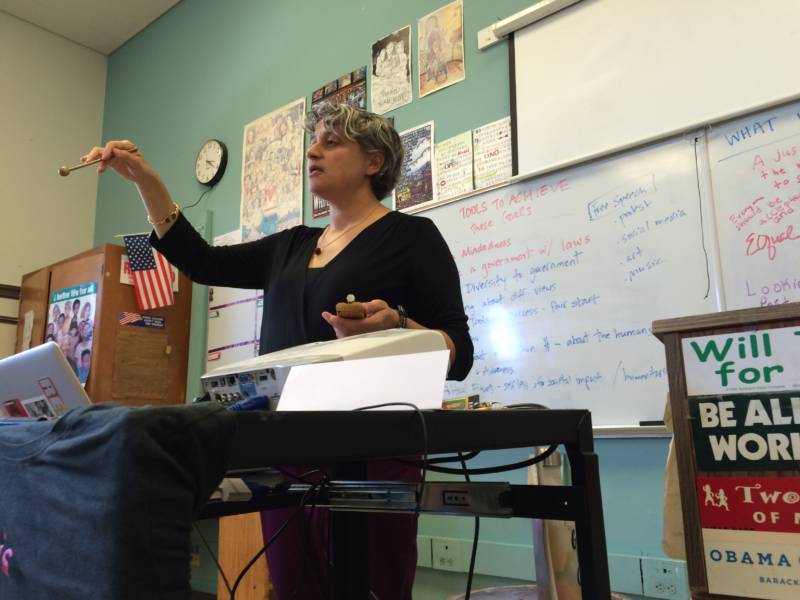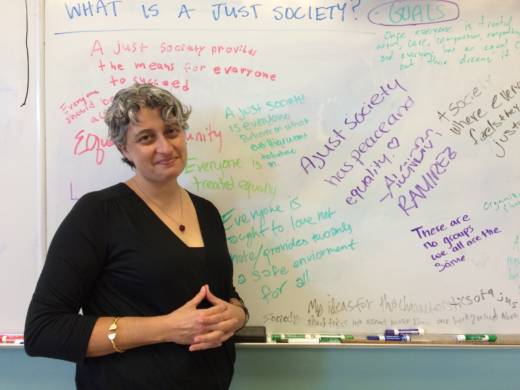Spencer is considered by many to be the modern-day icon for young white supremacists.
Two years ago, Berkeley High was rocked by its own string of racial incidents -- the most terrifying being a racist threat found on a library computer expressing support for the Ku Klux Klan and a public lynching.
The scandal raised something few on campus had considered before: Was there space at this liberal high school for students with extreme views or even conservative views to express themselves?
Minassian says teachers have been trying to talk more open and honestly about race relations with their students. 
“Our kids are really smart, and they see right through teachers' attempts to gloss over or sugarcoat things,” Minassian says. “I’ll say to them, ‘Look, this is going to be a little messy. This is how grappling with history is.’”
Inside the Classroom
Sophomore students head into Minassian’s world history class for today’s lesson.
Minassian asks them to break into small groups and discuss these two key questions:
What makes a just society?
How do you know if you are living a just society?
Sophomore Mara Halpern takes the lead in her group, saying the only way to learn is by hearing from different people.
“I feel like learning about these current events in class with people who don’t look like you, in the same room with you, is the solution,” Halpern says.
When the class regroups, Minassian challenges her students by asking them whether someone’s justice could be perceived as another person’s injustice.
Some students suggest perhaps like-minded people should stick together to prevent unneeded conflicts. Sophomore Kya Sweeney believes tolerance is a two-way street.
“If I’m going to accept you for all your hatred, and all your flaws, then you have to accept I am brown, that my friends are white, and that I can have an education,” Sweeney says.
Minassian says her point with her lesson plans is not to prove who’s right or wrong in her class, but to get her students thinking more critically about what is happening across the country and their own backyard.


